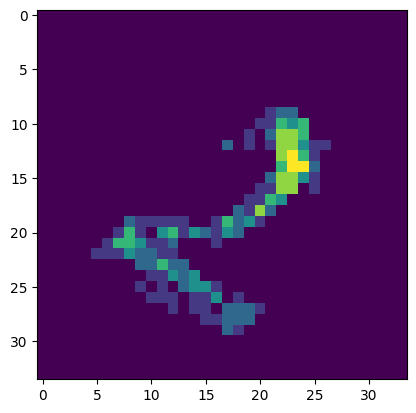Dataset slicing#
An event recording is somewhat similar to a video. Sometimes it is desirable to slice a single event recording into multiple samples. During training time, we might want to load just a slice of a recording rather than the whole one. This is typically the case when training an ANN on event frames, if one recording contains multiple labels or if recordings are just very long. We specify a slicer method which decides how recordings are cut into smaller chunks. The overall dataset size will grow larger the smaller the chunks are. Let’s look at how we can cut a sample of the N-MNIST dataset which is around 300 ms into smaller pieces of 50 ms.
import tonic
from tonic import SlicedDataset
from tonic.slicers import SliceByTime
dataset = tonic.datasets.NMNIST(save_to="./data", train=False)
slicing_time_window = 50000 # microseconds
slicer = SliceByTime(time_window=slicing_time_window)
sliced_dataset = SlicedDataset(
dataset, slicer=slicer, metadata_path="./metadata/nmnist"
)
Metadata written to ./metadata/nmnist/slice_metadata.h5.
print(
f"Went from {len(dataset)} samples in the original dataset to {len(sliced_dataset)} in the sliced version."
)
Went from 10000 samples in the original dataset to 59718 in the sliced version.
events, targets = sliced_dataset[100]
We can verify that the difference between last and first timestamp in the slice is not greater than our slicing time window earlier
slice_time_difference = events["t"][-1] - events["t"][0]
print(
f"Difference between last and first timestamp in slice: {slice_time_difference} us"
)
assert slice_time_difference <= slicing_time_window
Difference between last and first timestamp in slice: 49963 us
Applying transforms post-slicing#
We can specify transform and/or target_transform which will be applied to the slice after loading.
frame_transform = tonic.transforms.ToImage(
sensor_size=tonic.datasets.NMNIST.sensor_size
)
sliced_dataset = SlicedDataset(
dataset, slicer=slicer, transform=frame_transform, metadata_path="./metadata/nmnist"
)
Metadata read from ./metadata/nmnist/slice_metadata.h5.
frames, targets = sliced_dataset[100]
We can verify that the sum of events in the frames is the same as the number of events without transform.
print("Number of spikes: " + str(frames.sum()))
assert frames.sum() == len(events)
Number of spikes: 317
Caching a SlicedDataset#
To retrieve a slice from our new dataset means opening and loading the original recording, finding the desired slice and returning it. This adds considerable computational overhead. To speed things up we can make use of caching to store the slices either on disk or in memory.
In the next example we wrap our sliced dataset in a MemoryCachedDataset, which will write the slices to working memory, from where they can be retrieved very quickly the next time you need them (for example in the next training epoch). We’ll also provide an augmentation transform that is applied post-loading from cache.
import torch
import torchvision
from tonic import MemoryCachedDataset
torch.manual_seed(1234)
augmentation = tonic.transforms.Compose(
[torch.tensor, torchvision.transforms.RandomRotation([-45, 45])]
)
augmented_dataset = MemoryCachedDataset(sliced_dataset, transform=augmentation)
rotated_frames, targets = augmented_dataset[200]
%matplotlib inline
import matplotlib.pyplot as plt
plt.imshow(rotated_frames[0]);

